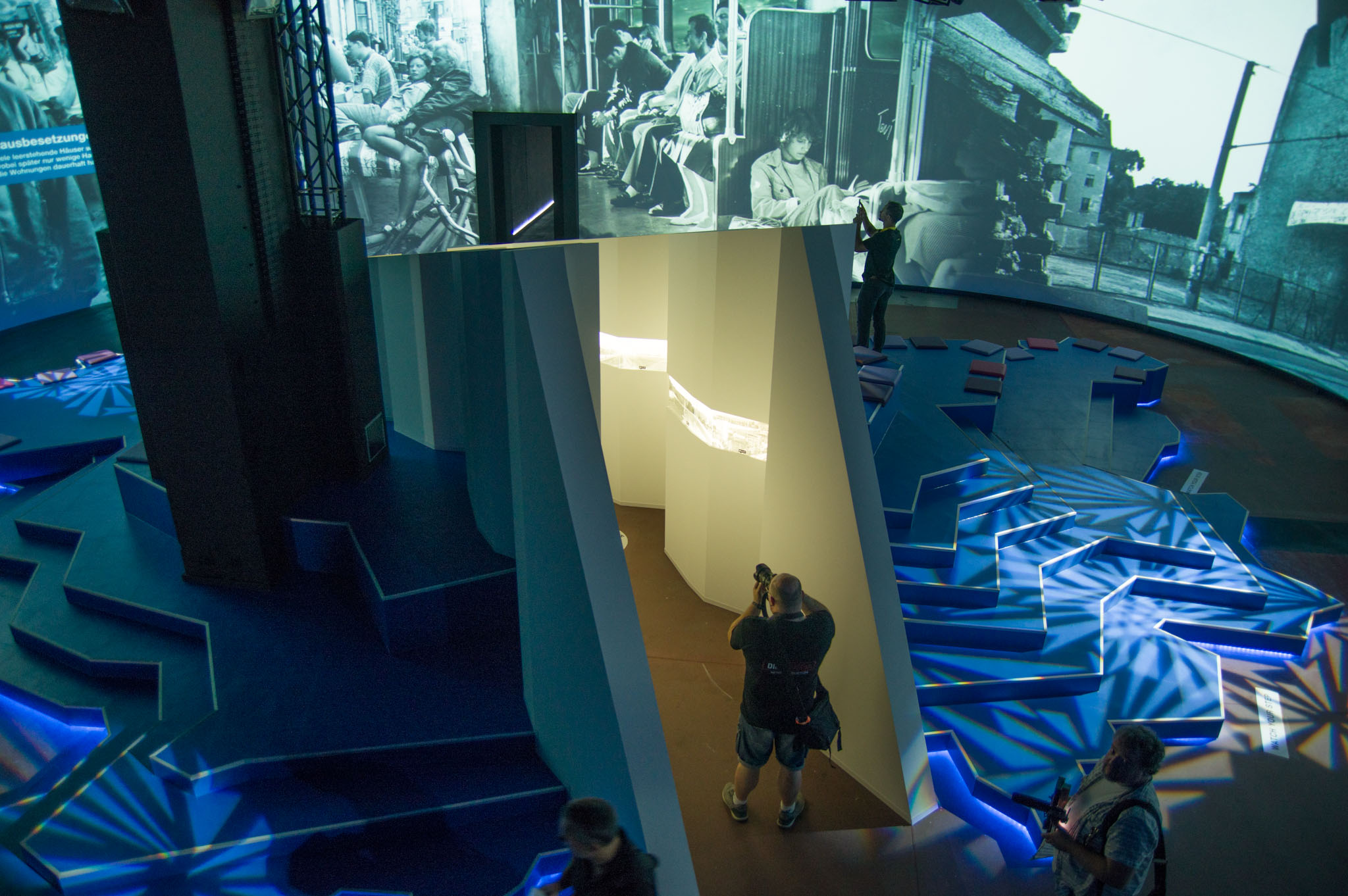Following a trip to Berlin over summer, Carmen Walker-Vazquez reviews a new multi-media exhibition that captures 1990s Berlin through music, video and installation.
Tucked away on a quiet industrial lot in the Berlin neighbourhood of Mitte is the city’s newest and largest multi-media exhibition. Opened to the public in August, ‘Nineties Berlin’ offers visitors an immersive journey into the city’s cultural renaissance following the fall of the Berlin Wall in 1989. The political implication of Germany’s separation and the restriction of movement experienced by East Berliners under the Iron Curtain of Soviet control has been the subject of many exhibitions; including the permanent East Side Gallery documenting the collective response of many artists and activists to the segregation painted directly onto the remains of the concrete barrier itself. An installation at the heart of Nineties Berlin constructed from 140 Kalashnikovs commemorates the citizens of the German Democratic Republic who were killed in their attempts to cross the wall to enter West Berlin. Arranged on a wall in identical lines, the guns are a stark reminder of the lives sacrificed in the struggle for freedom of movement.
Movement remains an enduring theme of the Nineties Berlin exhibition, starting with the introductory video projected onto the walls of a large circular room that encourages the viewer to walk around in order to read the information and look at photographs taken during the late 1980s on the neighbourhoods either side of the wall. The projection places you directly onto the derelict streets, the crowded trams and buses.
In the following room a series of smaller screens with headphones provide a one-to-one discussion from an individual living in the city when the wall fell. Musicians, football hooligans, club DJs, artists, journalists, even shop employees share their diverse experience of a new Berlin without barriers, now full of creative potential. For many Berlin residents the 1990s ushered in a period of cultural growth defined by innovative graffiti art and the internationally renowned techno scene.
Designed by the creative minds behind the Tacheles artist squat and community who lived and worked in the factory spaces abandoned along the wall, a maze fills one of the exhibition rooms sound-tracked by booming techno anthems. As I walked through the labyrinth, each dead end held a screen displaying information from the techno sub-culture, from the annual Love Parade festival to celebrate the fall of the wall to a documentary on the legendary Tresor club in Mitte. Nineties Berlin leaves you with a feeling of optimism, culminating in a rave in a mirrored room, a kind of Love Parade simulation.
Whilst the exhibition does highlight the oppressive conditions experienced by the residents of East Berlin, its depiction of the 1990s as a unique cultural explosion enjoyed unanimously across the city could be construed as too idealistic. In reality, many people continued to face poverty and unemployment despite attaining freedom of movement. Nonetheless, I left the repurposed factory space feeling inspired by the art, music and history I’d engaged with. Nineties Berlin captures the spirit of a city coming together.
The Nineties Berlin exhibition runs from 4th August 2018 – 28th February 2019.
Carmen Walker-Vazquez
Image Courtesy of Berlin on Bike

